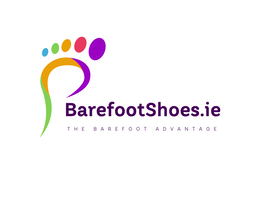
There’s a growing interest in barefoot running, especially in relation to running long distances. Research articles, opinion pieces, and websites have argued both for and against the efficacy of running without shoes, but few have stressed the importance of a measured transition. The primary argument for barefoot running is that it encourages the use of more natural biomechanics, which is lost when using traditional footwear. But it is very important to keep in mind that changes occur to technique when transitioning from shod (wearing shoes) to barefoot running. Primarily, there is a shift to forefoot/midfoot contact, as opposed to a rearfoot or heel, contact. Research has found this has performance benefits by showing that faster elite distance runners tended to have forefoot/midfoot contact. To facilitate this change in foot contact, step length is reduced, and step frequency increased. This means that over a given distance, you will complete more steps of a relatively shorter length when you run with bare feet. This change of technique is important, as when you remove the cushioning that is built into most running shoes, your running style must change to ensure the shock experienced when landing is reduced. Research on habitual barefoot runners found shorter step lengths helped reduce the force of impact. Proprioception and strength of the individual muscles in the feet could also improve with barefoot running. These muscles act to stabilise the foot during ground contact, a demand that is greatly reduced when running with shoes. Despite all this, there are some problems associated with barefoot running. When running without shoes, your feet have no protection have against the outside environment. While this may not be an issue on certain surfaces, such as grass, there may be problems if you’re a trail or urban runner. It also takes time to adapt to the changes in stress that will be experienced when running under new conditions. A habitually shod runner will need to adapt to the different stresses experienced during barefoot running. Several shoe companies are tapping into the barefoot running trend through changes to shoe design. These shoes are designed to mimic barefoot running – they don’t have the cushioning that’s present in traditional running shoes – while still providing protection from outside elements. Examples include the Nike Free, New Balance Minimus, Saucony Kinvara, and Vibram FiveFingers. The use of these shoes could serve as a bridge from running with shoes to running barefoot. Interestingly, all the current research has focused on distance running: no research has analysed barefoot maximal sprinting. This is significant, as correct sprinting technique should incorporate forefoot contact to help reduce ground contact time and increase step frequency. Further, if the muscles within the feet are strengthened during barefoot running, they could provide benefits for sprinting, where maximal force output is required. Here are some useful pointers for barefoot running, especially for those conditioned to running with shoes:
Perhaps the most important thing to remember is it’s not necessarily the shoes you wear that cause injury, but rather incorrect running mechanics. Ensuring that your running gait doesn’t predispose you to injury should be a stronger concern than just considering the type of footwear to be used. Robert Lockie, Lecturer in Exercise and Sports Science, University of Newcastle This article is republished from The Conversation under a Creative Commons license. Read the original article.
0 Comments
Your comment will be posted after it is approved.
Leave a Reply. |
|
We support Protect the Children of Kenya. A registered charity that helps assist children who have been withdrawn from forced labour. STOP CHILD LABOUR NOW - Learn more
Store Owner Kevin Griffiths , 8, Bothar an Chnoic, Knock Road, Claremorris, Mayo F12 E7D0
Ireland Reg No 642942 VAT No: IE 3232046U Dun & Bradstreet reg no 986063333
[email protected]
Ireland Reg No 642942 VAT No: IE 3232046U Dun & Bradstreet reg no 986063333
[email protected]

 RSS Feed
RSS Feed

